Hello, friends,
Wow, doesn’t time fly. It’s time for another Christmas quiz!
There are 20 questions with answers supplied at the end of the blog. All questions relate to subjects I have written about during 2019.
Have a wonderful Christmas and a Happy New Year!
- This extraordinary building near Liverpool Street Station is now a restaurant. But what was it when it first opened in 1895?
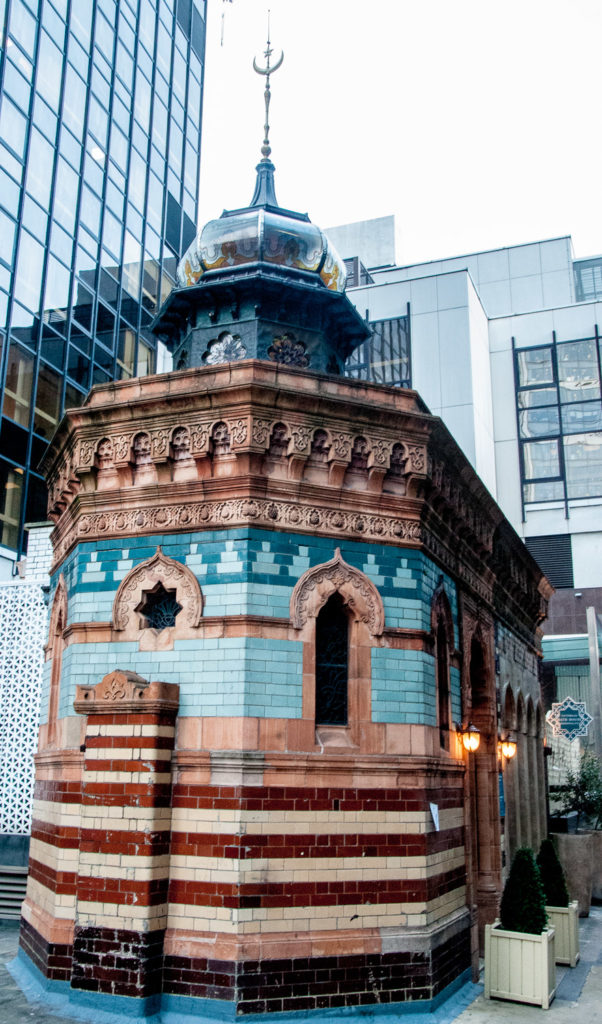
2. This man as portrayed in glazed faience reliefs in Widegate Street is clearly working very hard. What does he have in the sack?
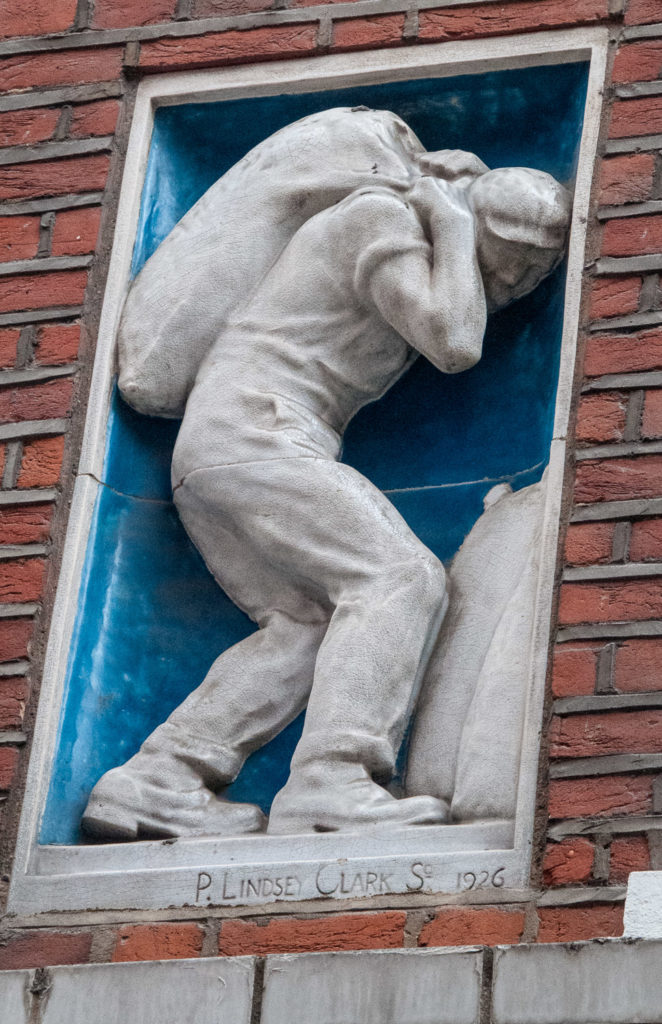
3. What’s the name of the alley where this ecclesiastical man’s head peers down on us?
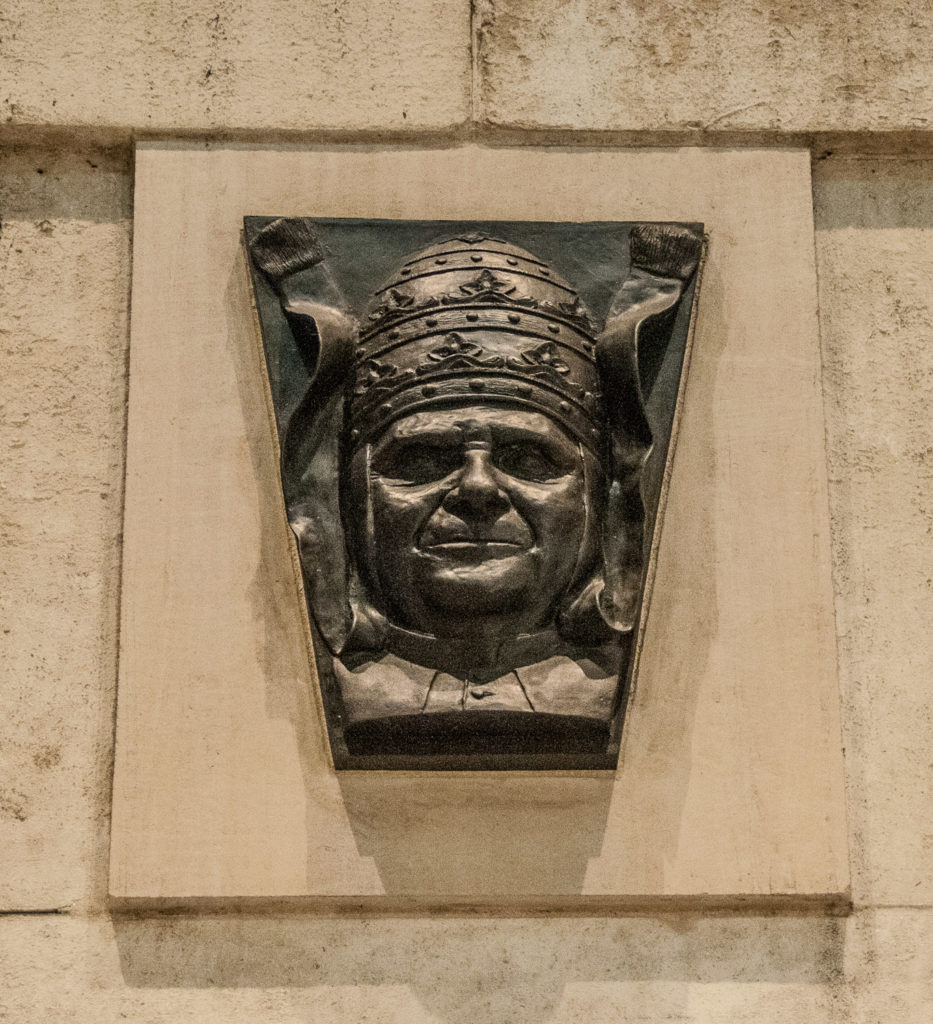
4. You’ll find various versions of this elegant lady throughout the City. What famous livery company does she represent?
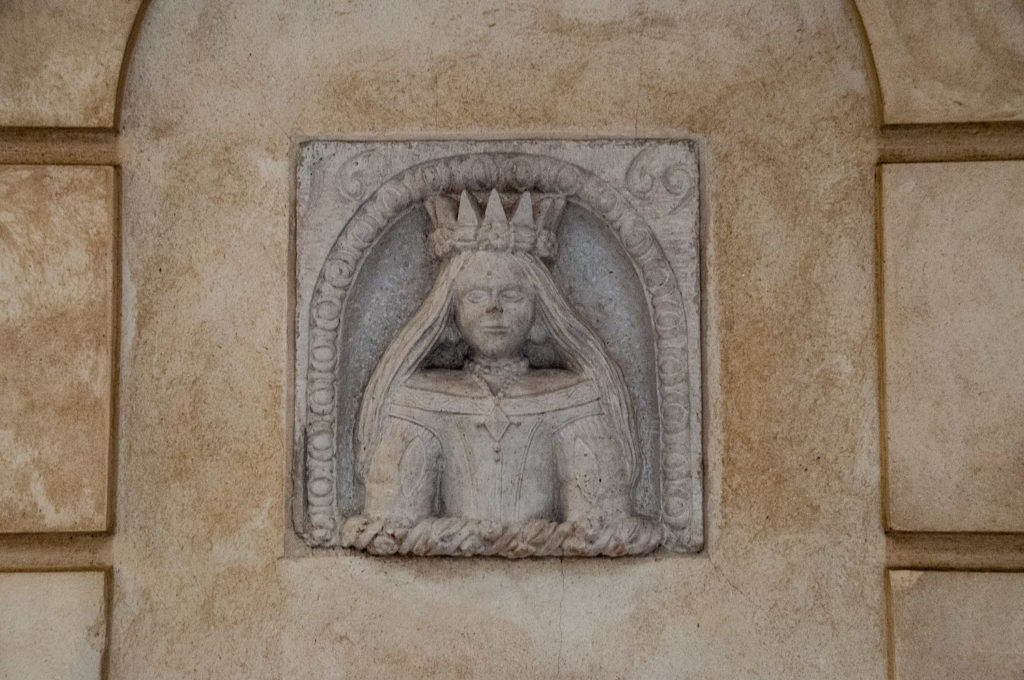
5. Just what is this happy chap up to?
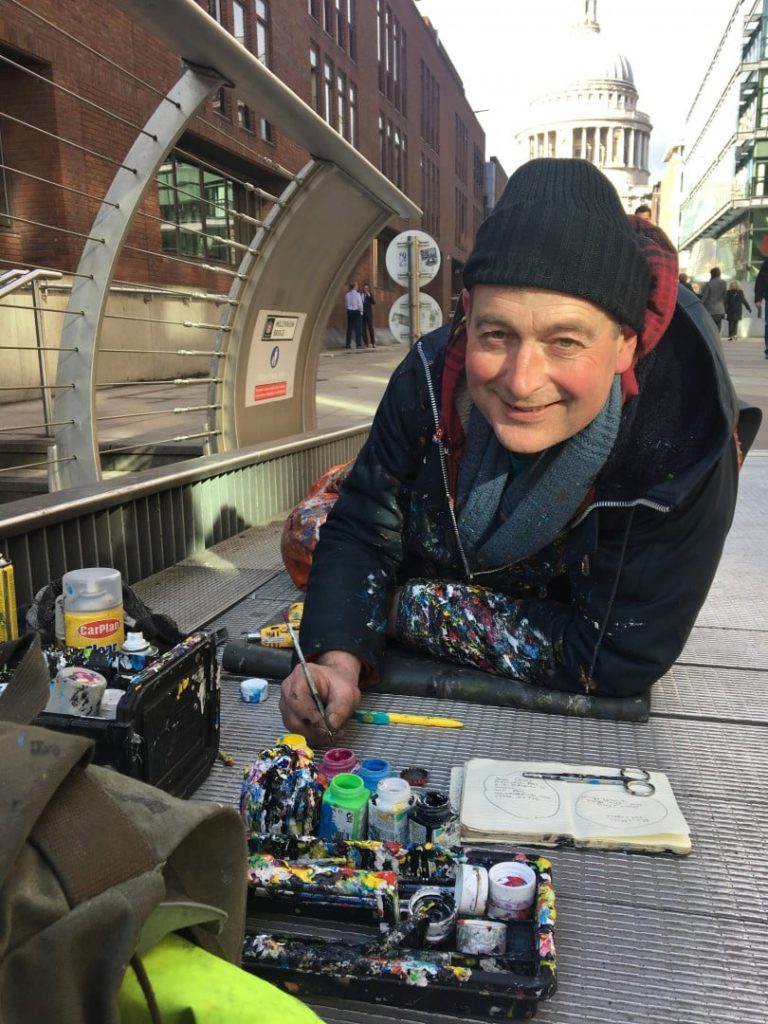
6. These men are going to meet a nasty end in this 1964 horror movie. What was the film called and what City church are they entering?
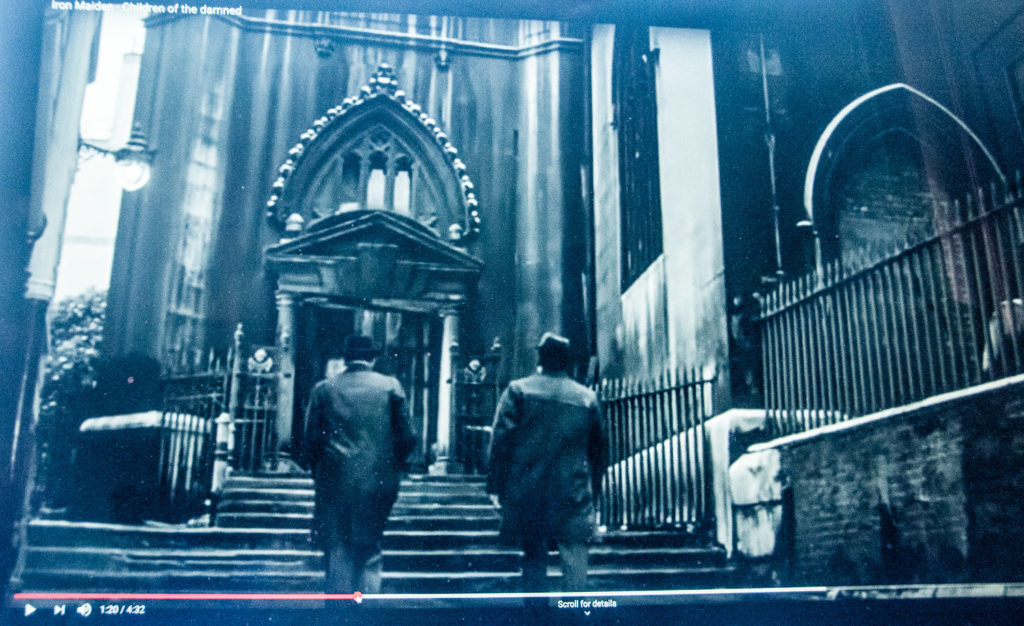
7. Where is this winged horse and what is it an emblem of?
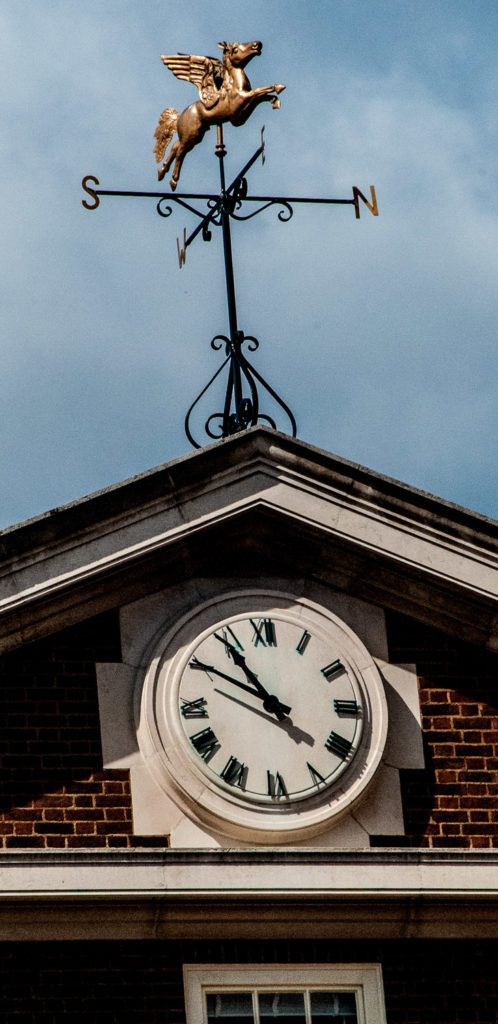
8. This voluptuous lady resting on a plinth in the Broadgate Centre has an appropriate nickname. What is it?

9. Why is the Thames riverbank littered with thousands of lumps of chalk?

10. This pretty lady in a Hart Street church looks like she is in mid-conversation. Who is she?
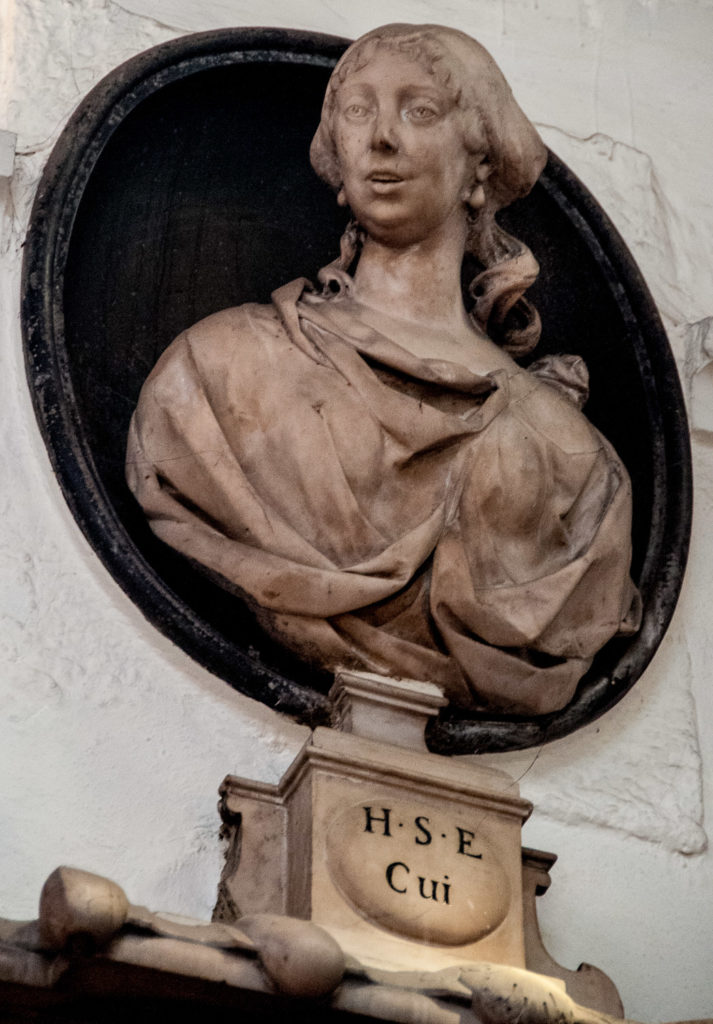
11. These offices in Garrett Street off Golden Lane have a very shallow, sloping set of stairs as a result of the original use of the building in 1897. What was that use?
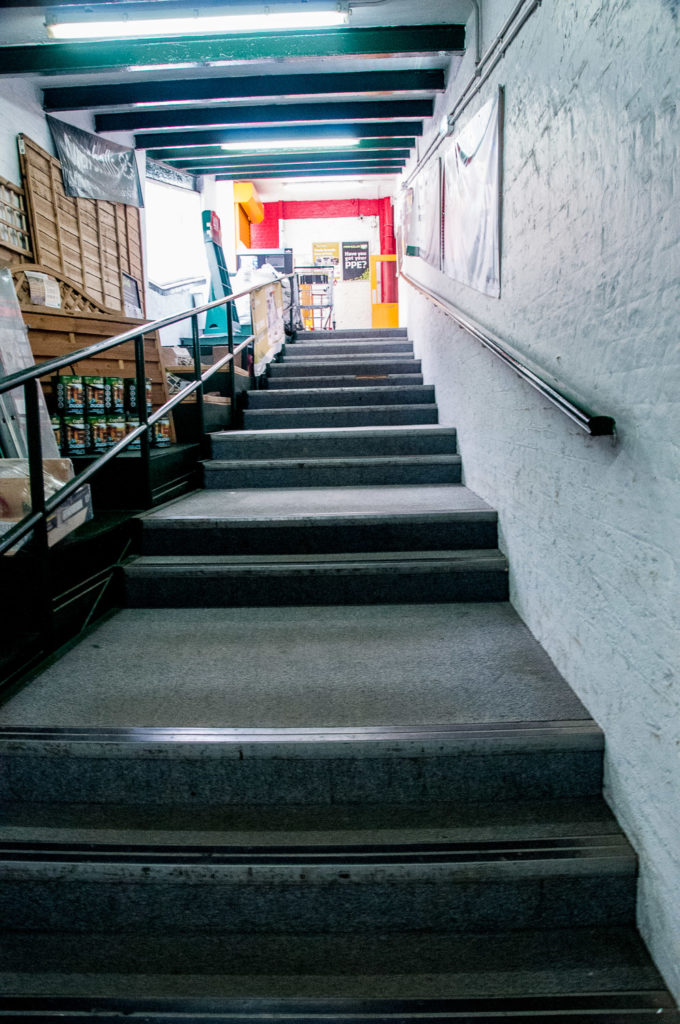
12. What famous piece of home entertainment equipment was once manufactured in these premises on Old Street? The name of the building is a subtle clue.
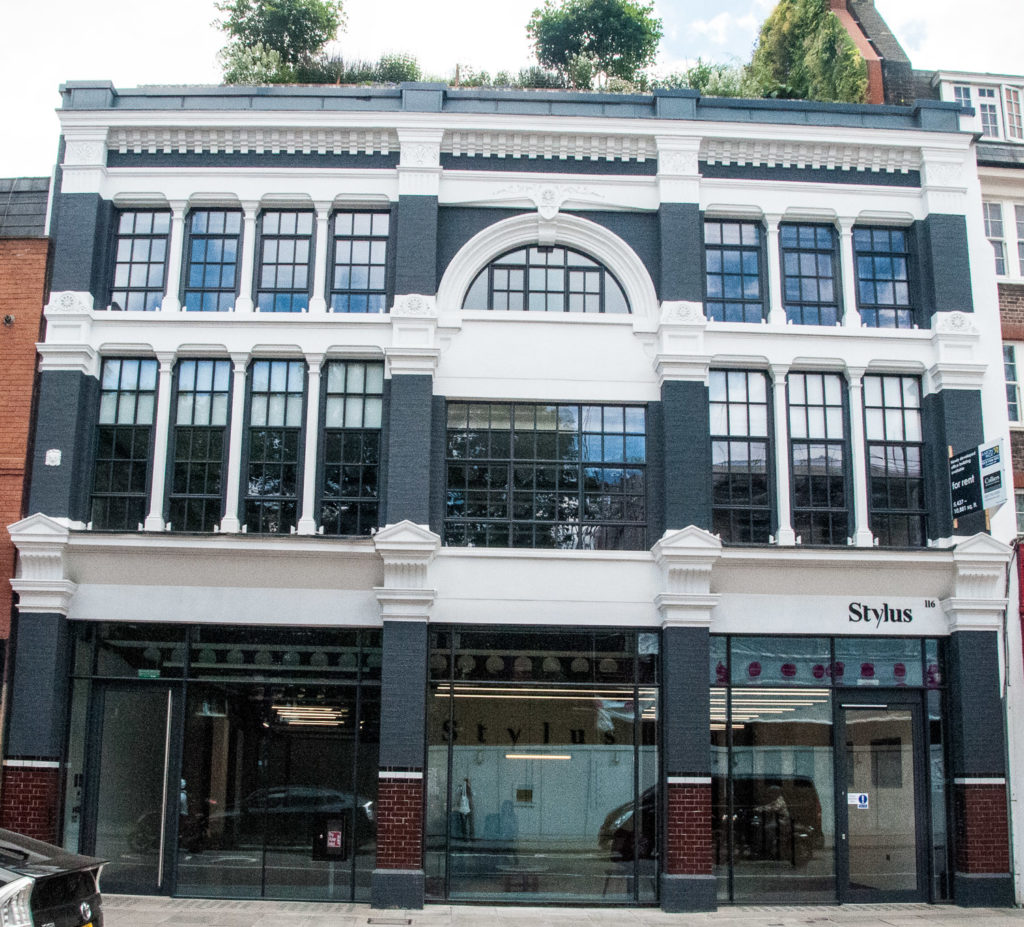
13. What can you sometimes hear if you put your ear to this grating at the junction of Greville Street and Saffron Hill?
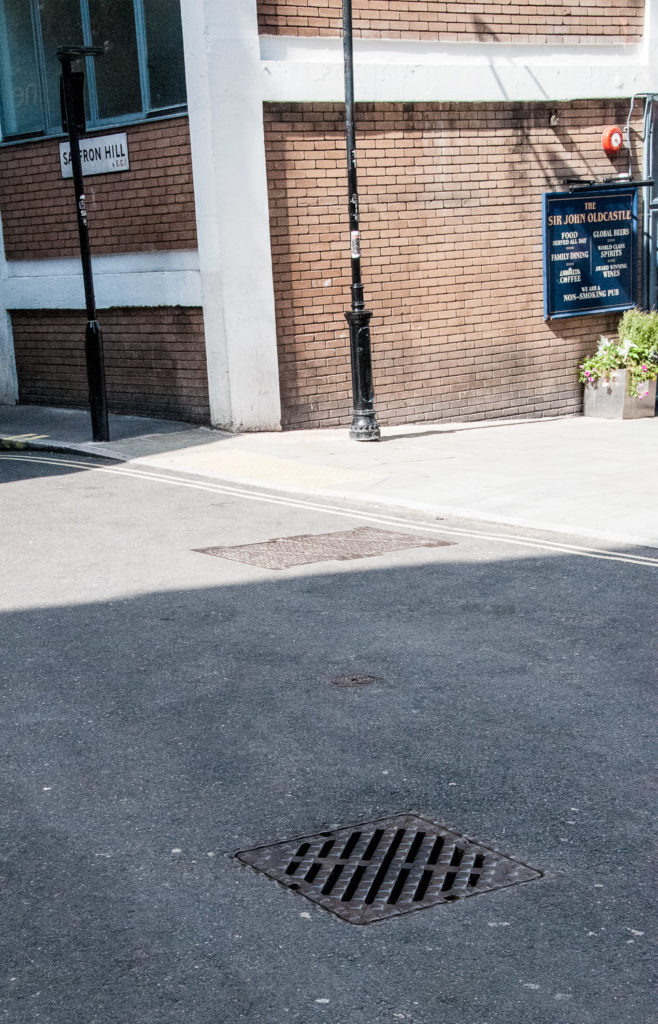
14. Where can you find this wall tile representing the Palace of Westminster?
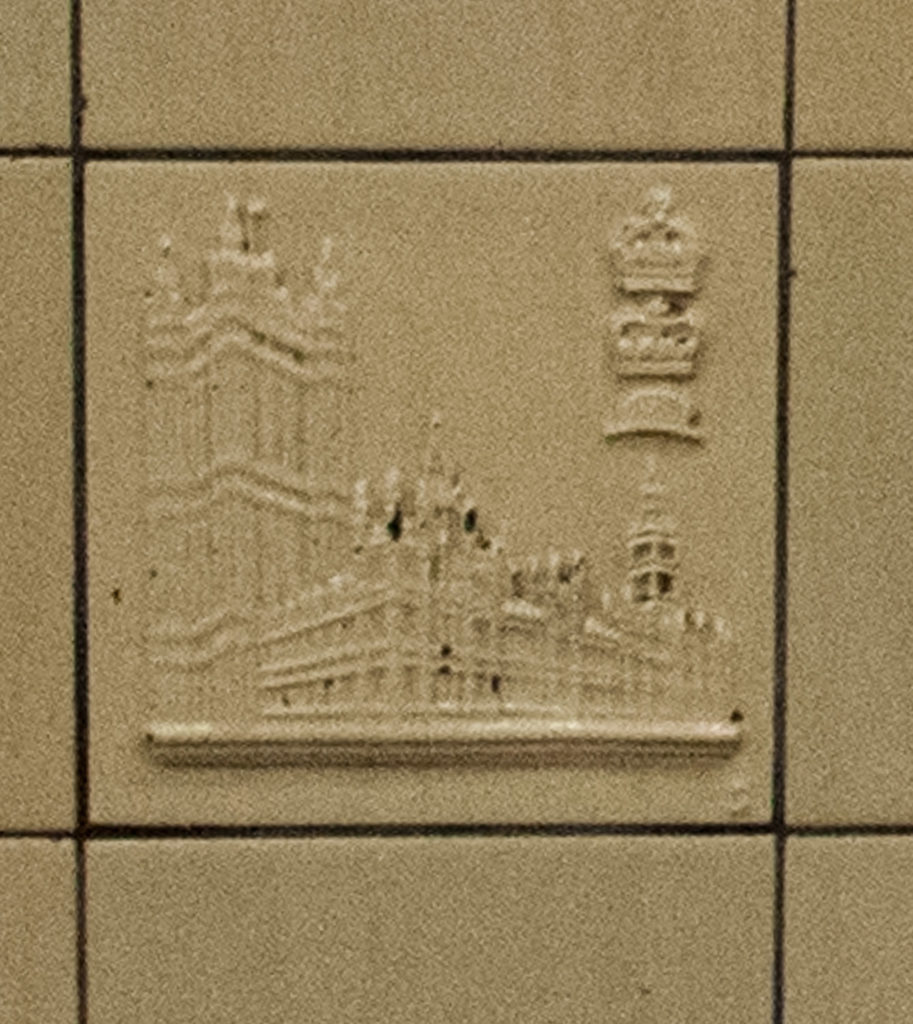
15. Why does this elaborate water fountain memorial contain a carving of a Christmas cracker?
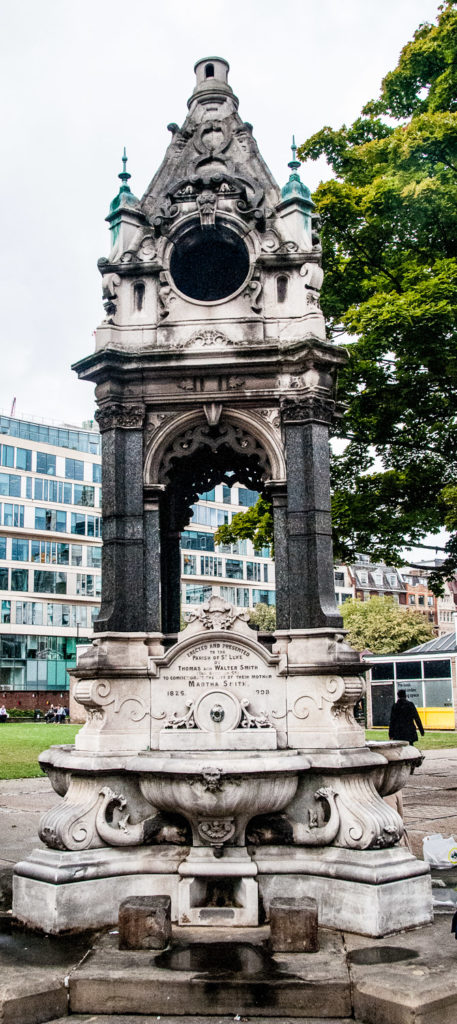
16. This creature was a sculptor’s best effort at imagining what an alligator looked like. Where is it?
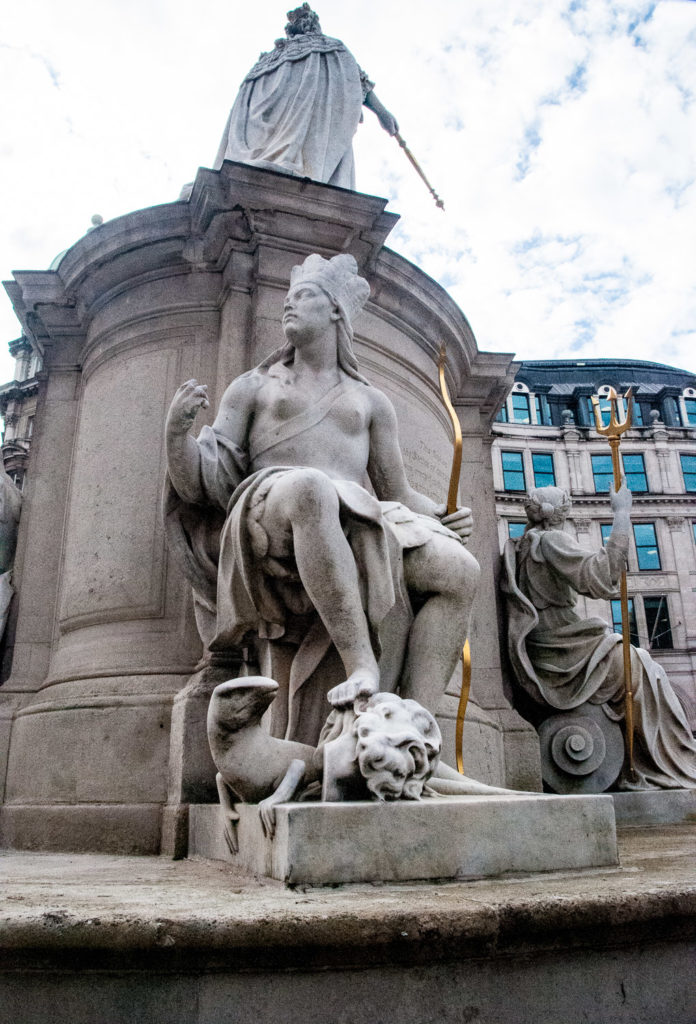
17. Where is this unusual post box and what is particularly odd about it?

18. Why did the word ‘Resurgam’ have a particular significance for Sir Christopher Wren?
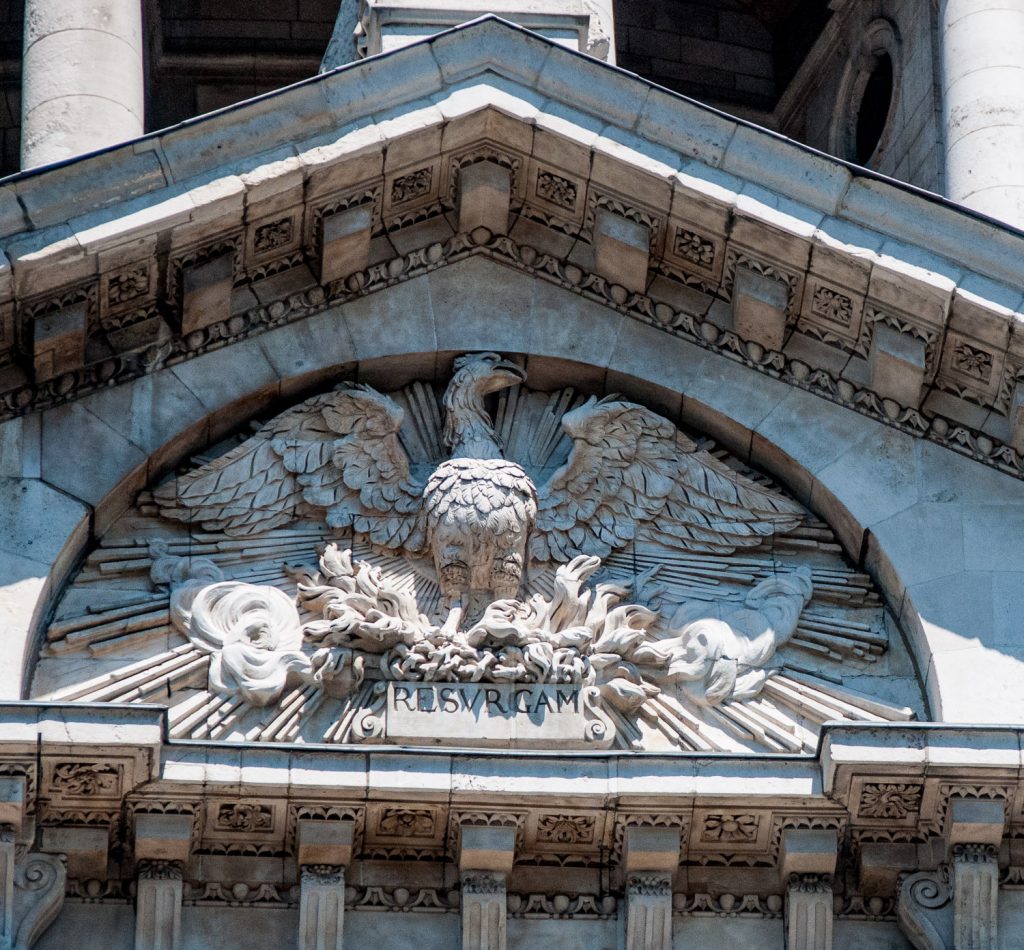
19. What was the connection between the Thomas Cook Travel agency and Fleet Street?
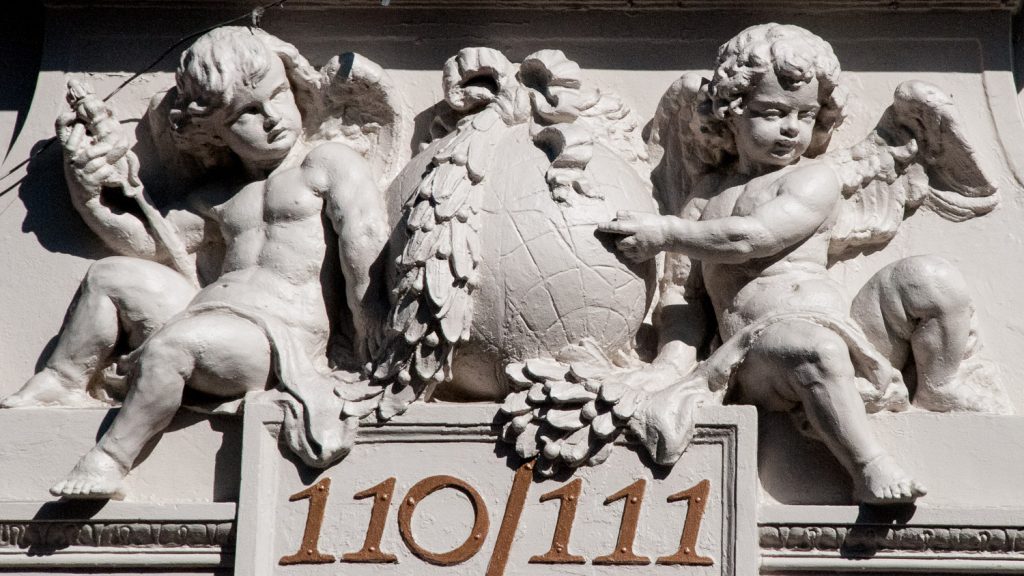
20. No one takes much notice of it now, but why was this piece of street furniture once known as ‘The Pump of Death’?
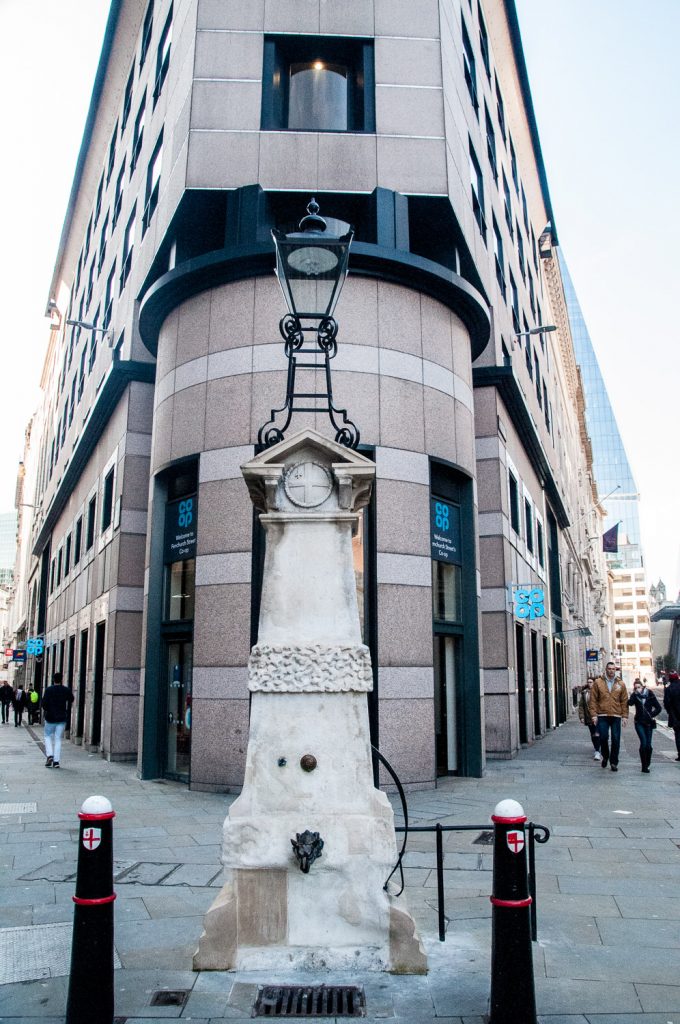
Answers to the Quiz
- It’s in Bishopsgate Churchyard near Liverpool Street Station and was originally a Turkish Bath. You can read all about its history here.
2. Also near Liverpool Street Station, this is the exterior of the former Nordheim Model Bakery at 12-13 Widegate Street. Here there are glazed faience reliefs which, as a group, show the bread-making process in beautiful detail. The man in the picture is hauling flour.
3. It is, of course, Pope’s Head Alley which runs between Cornhill and Lombard Street. I have written about it and other alleys and courtyards here.
4. She is a Mercer Maiden and marks a building, or an area, as belonging to the Mercer Company. She appeared a few times in 2019 blogs but I first wrote about her in detail here in 2017.
5. The artist Ben Wilson brightens up our lives by painstakingly turning pieces of discarded chewing gum into art. Read more about him and his work on the Millennium Bridge here.
6. The film was Children of the Damned and the church St Dunstan in the East. Read more and view a clip from the movie here along with a dramatic Iron Maiden soundtrack.
7. Pegasus, the winged horse, is the emblem of the Middle Temple in the Inns of Court.
8. Created by Fernando Botero especially for the site she is known as the Broadgate Venus.
9. On the Thames Riverbank large chalk beds were once laid down to provide a soft settling place for barges at low tide. Take a look at my Riverbank walk blog.
10. She is Elizabeth, the wife of Samuel Pepys, and her monument can be found in the Church of St Olave Hart Street. Pepys was distraught when she died from typhoid fever at the early age of 29. His memorial is directly opposite hers and their eyes meet eternally across the nave where they are buried alongside one another.
11. These were the stables custom-built in 1897 for the dray horses that pulled the Whitbread Brewery wagons. Where the staircase is now there was a slope which allowed the horses to be easily led up to the first floor.
12. Number 116 used to be the Margolin Gramophone Company factory. They manufactured the Dansette record player – a name very familiar to us baby-boomers. The stylus is a needle that rests against a record in order to play the recording.
13. Here you can occasionally hear the sound of running water since, directly underneath, runs probably the most famous of London’s ‘lost’ subterranean rivers, the Fleet.
14. Aldgate East station has some fascinating tiles that date from the 1930s. Many were created by the artist and craftsman Harold Stabler, who was commissioned by the London Passenger Transport Board in 1936 to design tiles to decorate new and refurbished underground stations. The first of the tiles were installed at Aldgate East when it was rebuilt in 1938.
15. It’s a memorial to Tom Smith, the inventor of the Christmas cracker. Read all about it here.
16. You will find this sculpture, which commemorates Queen Anne, outside the west front of St Paul’s Cathedral. The queen is surrounded by four allegorical figures and this one represents America. In 1712, this is what the original sculptor Francis Bird imagined an alligator would look like.
17 .This post box is just on the other side of the Henry VIII gateway to St Bartholomew’s Hospital. It’s unique in carrying no royal cipher and also because, although it faces the hospital, it is emptied from the other side of the wall in the street.
18. If you look up at the pediment of the south porch of St Paul’s Cathedral this is what you will see. Whilst staking out the foundations in the newly cleared site, Sir Christopher needed to mark a particular spot and asked a labourer to fetch a stone. The man came back with a fragment of a broken tombstone on which was carved 0ne word, RESURGAM – I shall rise again. Wren’s son later wrote that the architect never forgot that omen and it was an incident from which he drew comfort when the obstacles that arose during the long years of rebuilding seemed insuperable.
19. Thomas Cook, in partnership with his son, John Mason Cook, opened an office in Fleet Street in 1865. In accordance with his beliefs, Mr Cook senior and his wife also ran a small temperance hotel above the office. You can still see the building now, graced with numerous globes and cherubs.
20. Hundreds died when water from the pump became contaminated as a result of flowing underground too close to cemeteries.
I hope you enjoyed this year’s quiz.
Have a lovely Christmas break and a happy new year!
Do remember that you can follow me on Instagram :
https://www.instagram.com/london_city_gent/
